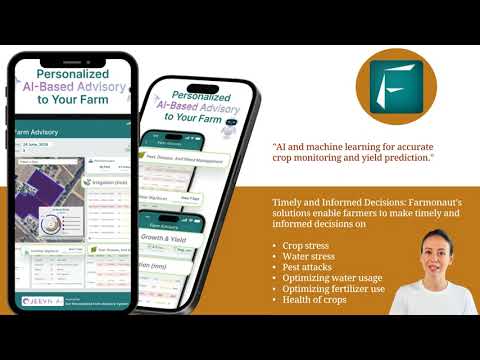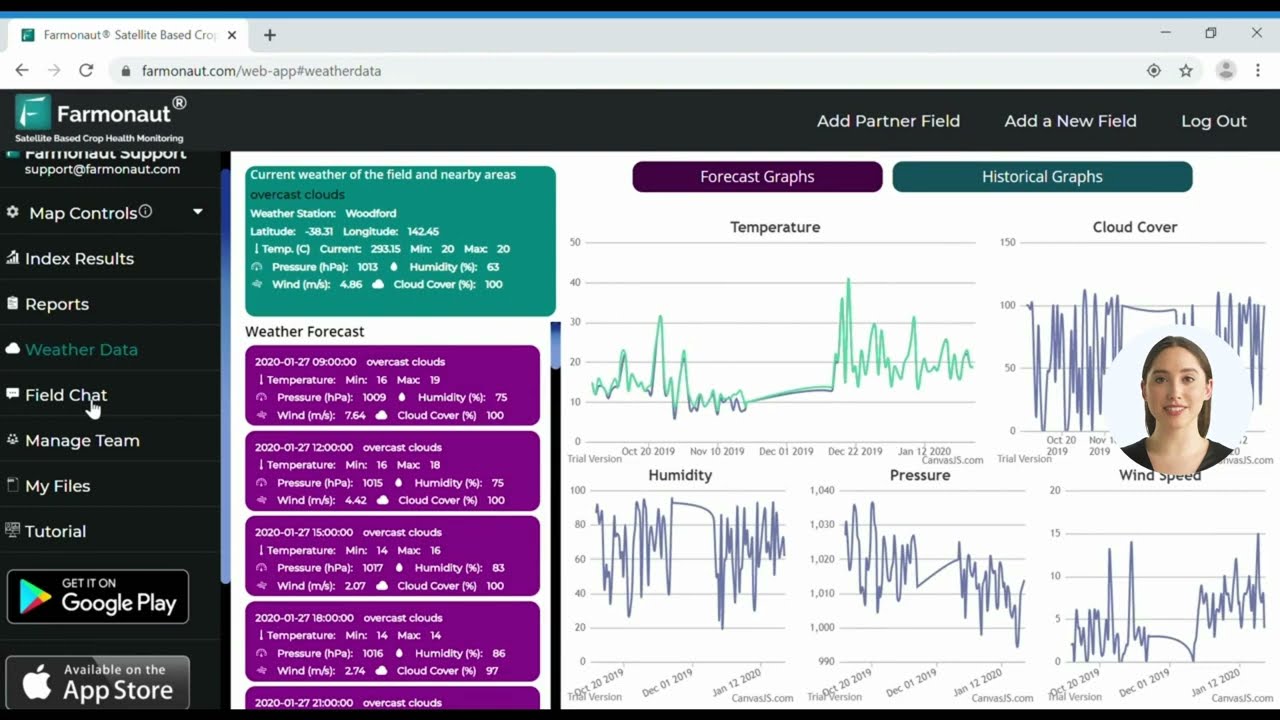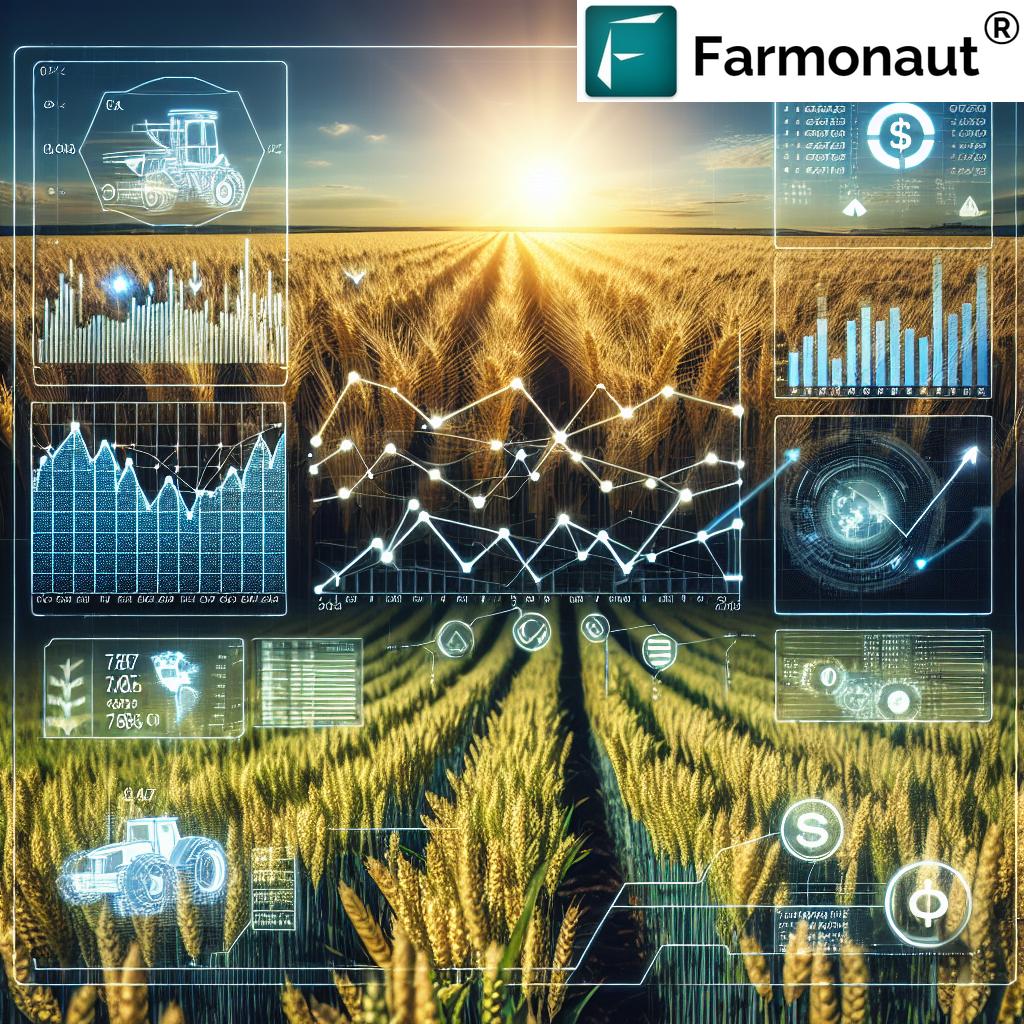Mastering Plant Pest Reporting: Farmonaut’s Guide to Strengthening Australia’s Agricultural Biosecurity
“Australia’s Exotic Plant Pest Hotline receives over 1,000 reports annually, contributing to early detection efforts.”
Welcome to Farmonaut’s comprehensive guide on mastering plant pest reporting and strengthening Australia’s agricultural biosecurity. As leaders in agricultural technology, we understand the critical importance of effective pest management and early detection in safeguarding our nation’s crops. In this blog post, we’ll explore the vital role of prompt action in encountering suspicious plant health issues and provide you with the knowledge and tools needed to contribute to Australia’s biosecurity efforts.
The Importance of Plant Pest Reporting in Australian Agriculture
Plant pest reporting and exotic plant disease detection are cornerstones of maintaining robust biosecurity in agriculture. As stewards of the land, we all play a crucial role in protecting our crops and ecosystems from potentially devastating infestations. By staying vigilant and reporting unusual pests or diseases promptly, we can contribute significantly to the early detection and management of threats to our agricultural sector.

At Farmonaut, we’re committed to supporting farmers and agricultural professionals with cutting-edge technology for crop monitoring and management. Our satellite-based solutions provide valuable insights into crop health, helping you identify potential issues before they become major problems.
Understanding the Exotic Plant Pest Hotline
The Exotic Plant Pest Hotline is a crucial tool in Australia’s biosecurity arsenal. This national reporting system allows growers, researchers, and members of the public to report suspicious plant health issues quickly and efficiently. By utilizing this hotline, we can ensure that potential threats are addressed swiftly, minimizing the risk of widespread infestations.
Key Information for Accurate Reporting
When reporting a suspect pest or disease through the Exotic Plant Pest Hotline, it’s essential to provide as much detailed information as possible. This helps authorities assess the situation accurately and respond appropriately. Here’s what you should include in your report:
- Your contact information
- The location of the suspected pest or disease
- A description of the affected plant(s)
- Details about the symptoms or damage observed
- Any recent changes in the environment or management practices
Remember, no suspicion is too small to report. It’s always better to err on the side of caution when it comes to protecting our agricultural biosecurity.
Best Practices for Sample Handling
Proper sample handling is crucial when dealing with suspected plant pests or diseases. It’s important to follow these guidelines to ensure the safety of both the sample and the surrounding environment:
- Do not move plant material without expert advice. This could potentially spread the pest or disease.
- Collect samples carefully, wearing gloves and using clean tools to avoid contamination.
- Store samples securely in sealed plastic bags or containers.
- Label samples clearly with the date, location, and plant species.
- Keep samples cool but not frozen, and deliver them to authorities as soon as possible.
By following these practices, you help preserve the integrity of the sample and support accurate identification and analysis by experts.
Enhancing Your Detection Skills with Technology
At Farmonaut, we believe in the power of technology to revolutionize agriculture. Our advanced satellite-based crop monitoring system can help you detect potential pest issues early, allowing for prompt reporting and action.
Here are some practical tips for using smartphone technology to improve pest documentation:
- Use high-resolution cameras to capture clear, detailed images of suspicious pests or symptoms.
- Enable location services to accurately record the GPS coordinates of affected areas.
- Utilize note-taking apps to record observations and details about the suspected pest or disease.
- Consider using specialized plant identification apps to help narrow down the possible causes of symptoms.
Explore our web app for advanced crop monitoring features:

Download our mobile apps for on-the-go crop management:


The Role of Plant Health Management in Biosecurity
Effective plant health management is a cornerstone of agricultural biosecurity. By implementing robust management practices, we can create resilient crop systems that are better equipped to withstand pest and disease pressures. Here are some key aspects of plant health management that contribute to strong biosecurity:
- Crop rotation: Disrupts pest life cycles and reduces the buildup of soil-borne pathogens.
- Integrated Pest Management (IPM): Combines biological, cultural, and chemical control methods for sustainable pest management.
- Soil health: Promotes healthy root systems and natural plant defenses.
- Water management: Proper irrigation practices can reduce plant stress and susceptibility to pests and diseases.
- Monitoring and surveillance: Regular crop inspections help detect issues early.
At Farmonaut, our satellite-based crop monitoring system supports these practices by providing real-time insights into crop health and potential stress factors.
“90% of successful pest containments are attributed to prompt reporting by vigilant farmers and researchers.”
Training and Education in Plant Pest Reporting
Continuous learning and skill development are essential for effective plant pest reporting and agricultural emergency response. Australia offers several free online training courses that can enhance your ability to identify and report exotic plant pests and diseases. These courses are invaluable resources for researchers, growers, and anyone involved in agriculture.
Key Training Opportunities
- Pest and Disease Identification Courses: Learn to recognize common and exotic pests and diseases affecting Australian crops.
- Biosecurity Best Practices: Understand the principles of on-farm biosecurity and how to implement them effectively.
- Emergency Response Protocols: Familiarize yourself with the procedures for responding to potential biosecurity threats.
- Sampling and Diagnostic Techniques: Learn proper methods for collecting and preserving samples for analysis.
By participating in these training programs, you’ll be better equipped to contribute to Australia’s biosecurity efforts and protect your own agricultural investments.
The Impact of Early Detection on Pest Control and Eradication
Early detection of plant pests and diseases is crucial for effective control and potential eradication. When suspicious symptoms or unusual pests are reported promptly, authorities can implement rapid response measures, significantly increasing the chances of containing and eliminating the threat. Here’s why early detection is so important:
- Limits spread: Quick action can prevent pests from establishing and spreading to new areas.
- Reduces economic impact: Early intervention minimizes crop losses and control costs.
- Preserves biodiversity: Protects native plant species and ecosystems from invasive pests.
- Maintains market access: Demonstrates Australia’s commitment to biosecurity, safeguarding export markets.
By leveraging Farmonaut’s advanced crop monitoring technology, growers can detect potential issues earlier than ever before, supporting these critical early detection efforts.
Partnerships and Collaboration in Agricultural Biosecurity
Effective agricultural biosecurity relies on strong partnerships and collaboration between various stakeholders. While Farmonaut is not directly involved in regulatory aspects, we recognize the importance of these relationships in maintaining a robust biosecurity system. Key partnerships in Australia’s biosecurity framework include:
- Government agencies at federal, state, and territory levels
- Research institutions and universities
- Industry bodies and grower associations
- Individual farmers and agricultural businesses
These partnerships facilitate rapid information sharing, coordinated response efforts, and the development of innovative solutions to biosecurity challenges.
The Future of Plant Pest Reporting and Agricultural Biosecurity
As technology continues to advance, the future of plant pest reporting and agricultural biosecurity looks promising. We at Farmonaut are at the forefront of these developments, offering cutting-edge solutions for crop monitoring and management. Some exciting trends to watch include:
- AI-powered pest detection: Machine learning algorithms that can identify pests and diseases from images with high accuracy.
- Remote sensing technologies: Advanced satellite and drone imagery for large-scale crop health monitoring.
- Blockchain for traceability: Secure, transparent systems for tracking plant material and potential pest spread.
- Mobile reporting apps: User-friendly platforms for instant reporting and information sharing.
These innovations will enhance our ability to detect, report, and respond to plant pest threats more efficiently than ever before.
Plant Pest Reporting Checklist
| Reporting Step | Action Required |
|---|---|
| 1. Pest Identification | Observe and document unusual symptoms or pest presence (Within 24 hours of detection) |
| 2. Documentation | Take clear photos using smartphone, noting date and location (Immediately upon detection) |
| 3. Sample Collection | If advised, carefully collect and store samples following biosecurity protocols (As directed by authorities) |
| 4. Contacting Authorities | Call the Exotic Plant Pest Hotline to report the suspicious pest or disease (Within 24 hours of detection) |
| 5. Information Sharing | Provide detailed information about the affected plants and observed symptoms (During the reporting call) |
Conclusion: Your Role in Strengthening Australia’s Agricultural Biosecurity
As we’ve explored throughout this guide, effective plant pest reporting is crucial for maintaining strong agricultural biosecurity in Australia. By staying vigilant, reporting suspicious pests promptly, and leveraging advanced technologies like those offered by Farmonaut, we can all contribute to safeguarding our crops and ecosystems.
Remember, your observations and actions can make a significant difference in early detection and rapid response efforts. Stay informed, participate in training opportunities, and don’t hesitate to report any concerns to the Exotic Plant Pest Hotline.
At Farmonaut, we’re committed to supporting Australia’s agricultural community with innovative solutions for crop monitoring and management. Explore our range of services and join us in building a more resilient and sustainable agricultural future.

Farmonaut Subscriptions
Frequently Asked Questions
Q: What is the Exotic Plant Pest Hotline?
A: The Exotic Plant Pest Hotline is a national reporting system in Australia for suspicious plant health issues. It allows growers, researchers, and the public to report potential pest or disease threats quickly.
Q: How can I improve my pest detection skills?
A: You can enhance your detection skills by participating in training courses, using smartphone technology for documentation, and utilizing advanced crop monitoring tools like those offered by Farmonaut.
Q: What information should I include when reporting a suspect pest?
A: When reporting, include your contact information, the location of the suspected pest, a description of the affected plants, details about the symptoms or damage observed, and any recent environmental or management changes.
Q: Are there any free training resources available for plant pest reporting?
A: Yes, Australia offers several free online training courses on pest and disease identification, biosecurity best practices, and emergency response protocols.
Q: How does early detection impact pest control efforts?
A: Early detection significantly improves the chances of successful pest containment and eradication. It limits spread, reduces economic impact, preserves biodiversity, and helps maintain market access for Australian agricultural products.
For more information on our satellite-based crop monitoring solutions, visit our API page or check out our API Developer Docs.

















